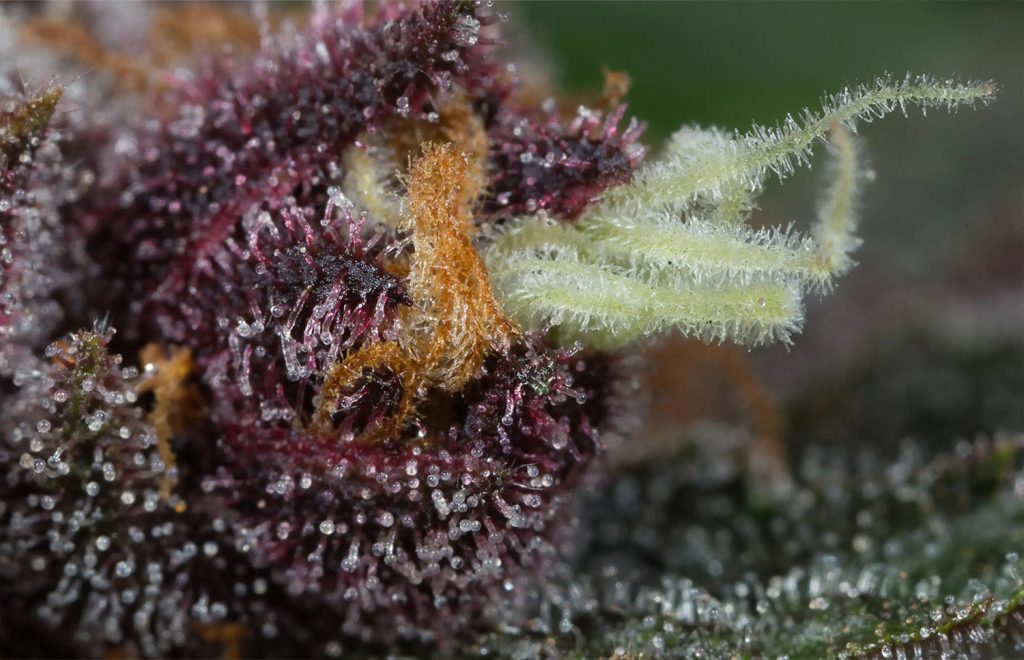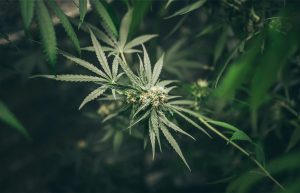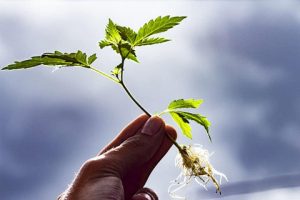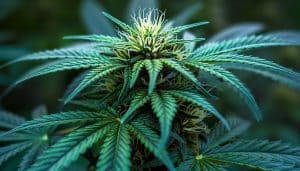- Mildew is a cryptogamic disease that is quite often found in many agricultural cultures, as in the cultivation of cannabis that interests us here.
- This pathogenic fungus generates an infection within the contaminated plant, which is associated with different characteristic symptoms, which appear as propagation progresses.
- During this article, we explain to you what mildew is clearly, how to detect its presence within our dear plants and also how to eliminate it permanently to avoid losing the harvest.
- What is the mildew exactly?
- What are the conditions promoting the presence of mildew?
- How to eliminate the mildiou from my cannabis culture?
It is certain that many cultivators with some experience in the cultivation of cannabis, have already encountered problems with fungal diseases that produce mold, such as mildew, THE botrytis, Oïdium, THE fusarium or alternaria. These mushrooms attack cannabis plants gradually, as many symptoms make their appearance in the culture space.
There prevention is by far the best way to avoid all problems with all of these phenomena. It is better to show great vigilance, because these plagues can cause others, quite simply because once cannabis plants are weakened by this mold at the level of their immune system, the presence harmful insects could quite easily occur within your culture space indoors and outdoors.

Even if an infection of mildew It is not the most formidable that it is for the cultivation of cannabis, it is preferable to protect and preserve each plant in their entirety, because these molds attack each part of the stage step by step.
The leaves can be easily affected for example, which will gradually alter the process of photosynthesis, and complicate a whole set of internal metabolisms, which will weaken plants as time passes and cause a partial or total loss of the harvest. This is the reason why we give you some advice on how to manage such a situation.
A first good fundamental advice that we can send to you, is to carefully select the varieties of high quality cannabis seeds that you will buy, by attaching particular attention to the specificities of your climate.
It is logical to think that if you live in a region where the humidity is high for various reasons, you should choose cannabis varieties which demonstrate a certain level of resistance to many pathogenic fungi causing mold. It is an elementary starting point to avoid the appearance of rot.
WHAT IS THE MILDEW EXACTLY?
THE Mildew (Phytophtora infestans) is a pathogenic fungus whose first visual symptoms appear both on the upper part of the leaves, on which we observe Small spots of a yellowish with translucent, but also the presence of a White layer of residual floury powder.
THE stems and the heads can also be affected, if the latter are contaminated, they will then be unfit for consumption because this could cause serious respiratory problems in humans. It is possible to confuse the mildew with powdery mildew, because the latter has fairly similar symptoms, except that these circular tasks appear only on the upper part of the leaves concerning powdery mildew, while in the case of mildew, both faces may be an attack by this fungus.
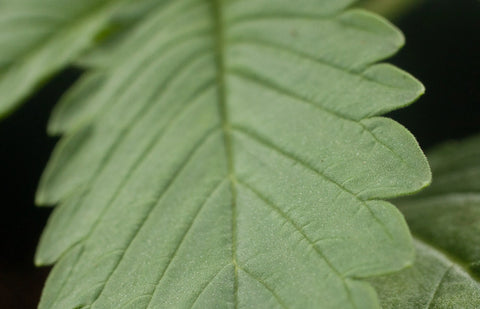
Mildew will then act by doing curl the leaves upwards, before seeing them die Gradually but surely. Mildew is a harmful fungus which most often develops thanks to the spores of the latter, which will fix and colonize the leaves, in order to facilitate reproduction as the propagation of the disease by forming this identifiable rot on the different parts of the plant. The first visible consequence will be the slowdown in growth or flowering of the plant.
Generalized infection by mildew can be rapid in a culture, because even if mold appears during the last weeks of flowering, it is quite possible that this leads to a substantial loss of the final production of the precious Quality heads that we are all looking for, as a total loss of harvest if the disease does not receive adequate treatment in time.
It is also good to know that spores of cryptogamic diseases can remain dormant for a long time, until all the favorable conditions are finally met, so that they are fully developing on plants of all kinds.
WHAT ARE THE CONDITIONS PROMOTING THE PRESENCE OF MILDEW?
What is actually occurring internally within the cannabis plant is that the latter already suffers from one or more nutrient deficiencies in its food balance, which has the consequence of weakening its immune system. This makes it possible to rule out all factors related to its environment, and this allows us to better understand that each plant gradually loses its resistance capacity against a possible attack by Mildiou.
This is the reason why it is important to pay particular attention to the nutrition of your plants, bringing them the quantity adapted in water and nutrients, all in controlling the humidity level with a certain precision. You have to be vigilant not to add too much nitrogen to your nutritional solution, as this would worsen the progression of this fungus.
As we mentioned in the previous chapter, we must take great precautions to ensure that this does not generate associated problems, such as the arrival of certain pest insects. Mildew comes from the action of several species of pathogenic fungi.
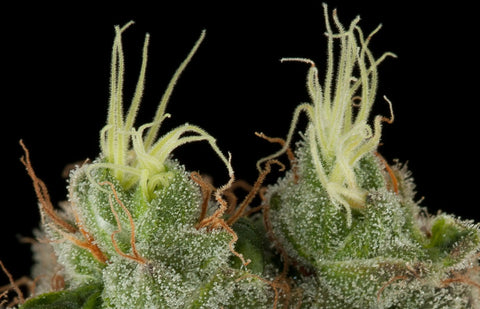
The latter cause cryptogamic diseases through mushrooms or molds, which ideally occur under the conditions of an environment where Air humidity is very high, and also where the air renewal as Space ventilation are not sufficient. A high humidity rate already constitutes comfortable conditions or a first choice environment, for the development of a good rot worthy of the name.
Good circulation like good air renewal, are essential things in terms of climate management within the culture space, because it is absolutely necessary to avoid creating air pockets at different corners and corners of our culture indoor cannabis.
These air pockets constitute an ideal habitat for the diffusion of fungal spores on each plant. For the proper realization of an indoor cannabis culture, it is fundamental to closely monitor two key climate values, which are the humidity of the air and the variations in temperatures.
If you have stable values concerning these two aspects, both during the growth phase as during flowering, then you should already avoid many problems. It is also important to carry out more or less defoliation depending on the cultivated varieties. This in order to limit the accumulation of humidity in the heart of the structure of each plant, which would facilitate the arrival of mold.
This action will promote the passage of air, while also facilitating the passage of light, which will be positive at the same time for the production potential of delicious scented heads loaded with trichomes of resin, offered by each cannabis plant from our garden. We often say it, but it is necessary to give great care to the choice Varieties of high quality cannabis seeds that you are going to buy. Check that their characteristics correspond to the climatic conditions of your region.
If each plant contains too many leaves on its structure, there is also the possibility of contamination by contact, that is to say that the plants will be transmitted the infection between them by simple friction of the leaves, stems or heads. As we said before, the fungal spores are very volatile, invisible to the naked eye and they can therefore be fixed wherever they want.
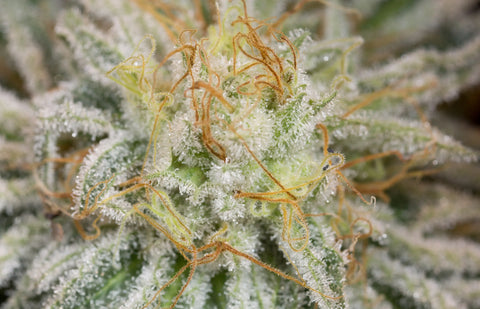
HOW TO ELIMINATE THE MILDIOU FROM MY CANNABIS CULTURE?
If you were not aware of the prevention measures to follow, then you will probably be confronted with the harmful action of this mushroom. This is the reason why we give you some recommendations below to eliminate these mushrooms which could undermine the good future of our harvest.
REMOVE DEAD LEAVES AND PLANT WASTE
At first, it is necessary to first clean up the different surfaces of the contaminated parties of culture and plants (apart from heads), using water with high pH between 8.0 and 8.5. The effects produced by this water at the high pH, will be very beneficial for our dear cannabis plants, because the spores of the fungus will no longer be able to fix on the different sensitive parts of the plants (leaves, stems, heads), to reproduce and colonize the environment.
To do this, please use wipers or a clean cloth, on the other hand, we will take care to throw them away from the culture space, once our cleaning session is finished. You will also need water at room temperature, especially to remove spores on the plants, in order to avoid any thermal shock on the living.
Also think of Pick up all dead leaves like plant waste And to quickly take them to a recycling center far from your culture space, just like your used rags during disinfection. It should be kept in mind that dead leaves and plant waste, constitute a privileged habitat for the reproduction and development of many fungi such as mildew, botrytis, powdery mildew, fusarium Or the alternaria, but it is also a first choice destination for many harmful insects, which could come to join these sad festivities.
CUT THE PLANTS IF NECESSARY
Do not hesitate to make a size on all the affected parts of the plants, whether on the sick leaves, which dry, fade, yellow and die gradually. But also in particular on the heads, which will in any case be unfit for consumption if they are affected by the fungus, and finally on the stems when possible.
Of course, be vigilant to quickly get rid of all this plant waste far from the place of your activity. This action will also have as a value added, to stimulate the hormones of each plant (auxins and cytokinines, which are important for the architectural growth of cell walls) in an optimal way for their structural development.
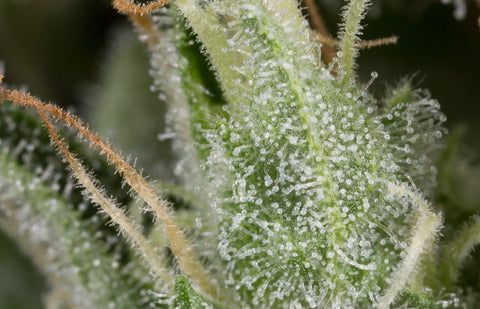
AVOID REPOTTING IF THE PLANTS ARE SICK
With a little reflection, it is certain that it is preferable not to proceed to the transplantation of your cannabis plants in a soil composed of very fresh earth at that time. This is quite logical in fact, because when we shake the plants without necessarily wanting to place them in a larger pot containing a new mixture of quality earth, we will Sow, spread and diffuse fungal spores on the surface of the ground or in our mixture of quality earth.
You have to be careful, as this could cause new parasitic problems at the level of the ground, and more precisely roots, which could pay the price for a fungal attack from the pythium For example. A pythium attack is formidable for the roots, because the effects produced on sowing generates their death almost certain in a short time.
Pythium or “melting of sowing” is difficult to treat, because as the problem is located in the underground part of the soil, it is a part of the plant whose access is not easy. For people who appreciate producing seeds to carry out different personal experiences, it is good to know that pythium can be dormant in the “seeds” that you will harvest.
If you cultivate contaminated plants that will produce seeds that you want to keep for your future activities, then expect to encounter certain problems, you will not be able to say that you have not been warned. A certain percentage of new individuals who will germinate, will have parasitic problems in terms of roots because of pythium, at a more or less advanced stage of their growth or flowering phase.
We must also take some precautions in the face of a phenomenon which could arise out of ignorance, because like fusarium and pythium directly affect the roots located in the soil and therefore which are invisible for our eyes, we could confuse certain symptoms with possible viruses , like the hop viroid, whose expression is quite similar to these two pathogens mentioned.
EFFICIENTLY
You can carry out a fungicidal treatment which acts either by contact with the plant tissues, or else systemically, this means that one mixes a biological or chemical product with the nutritive solution with which we will carry out the watering of the plants of cannabis. This constitutes the means of absorbing this type of treatment, whose active control compounds will be disseminated thanks to the internal water and nutrient routing system, in all the organs of each plant for optimal action .
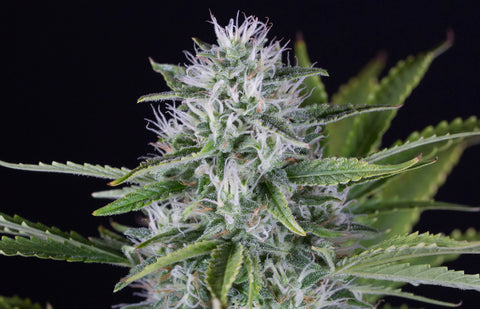
We recommend the use of different fungicides by contact, such as the cymoxanile, THE chlorobotanil Or The Imazalilil, as soon as the first rains arrived in order to obtain a shield effect on the plants. About the systemic fungicides, We recommend that we carry out a treatment using metalaxyl, triadimenol or myclobutanil.
Each product must be applied within a maximum of 72 hours, in order to eradicate these plagues with the greatest efficiency of your crops. Take the time to read all the dosages information, such as safety measures to use these products before applying a possible treatment. You will have understood throughout this article, that prevention is always better than infection.
This is a good reason to say in summary, that if you manage to obtain good management of the temperature as well as humidity within your indoor space, corresponding to the necessary values during the growth period as for flowering, so you will drastically reduce the chances of the arrival of these fungal problems in your cannabis culture. Also make sure you have a sufficient space between the different plants, as well as a homogeneous air mobility in culture space.
